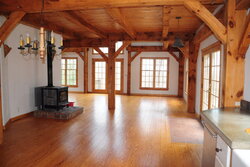I know that soap stone absorbs and releases heat and that some stoves are built with soap stone as part of their design.
Has anyone used soap stone materials to protect combustible surfaces and, at the same time, slowly release that heat? Or, maybe just keep some soap stone objects near the stove to slowly release heat?
Just wondering......
Has anyone used soap stone materials to protect combustible surfaces and, at the same time, slowly release that heat? Or, maybe just keep some soap stone objects near the stove to slowly release heat?
Just wondering......


